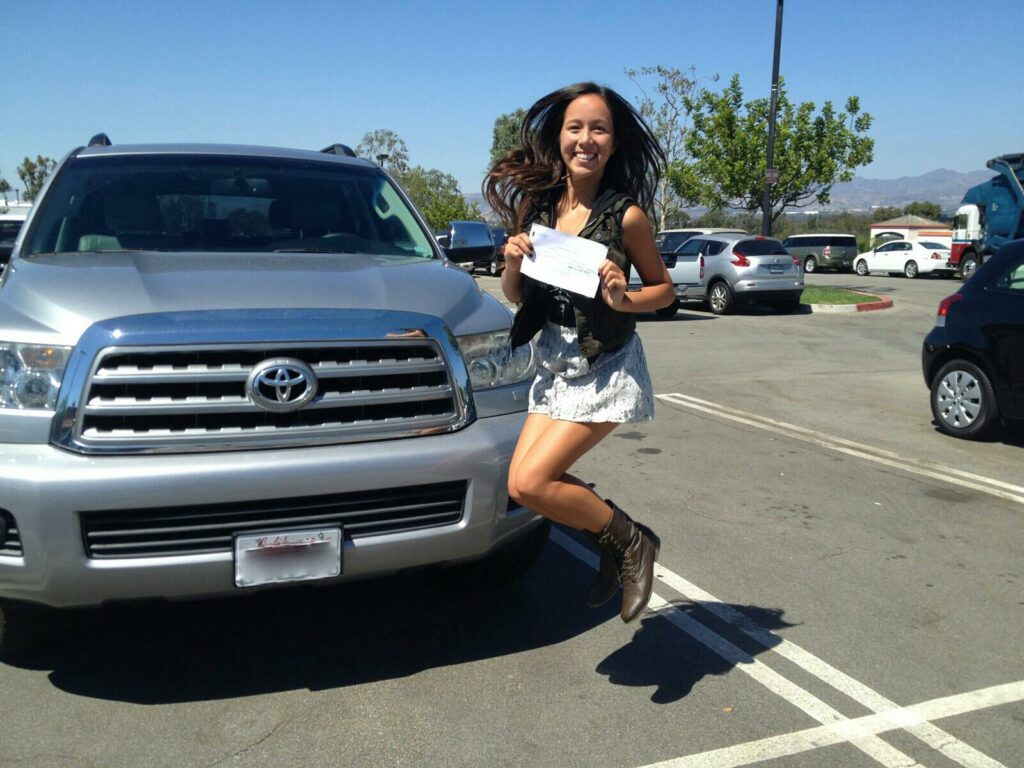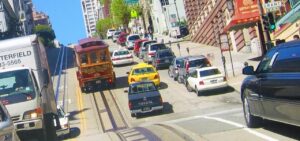What You Need To Know Passing Your California Driving Test

We are aware that taking your California Driving Test might be anxiety-inducing. There is nothing to be concerned about with a little planning and knowledge of the test itself. This manual will make sure you are aware of the particular requirements in California, what to anticipate on the test, and our best study advice. Here’s all you need to know to ace the DMV behind-the-wheel test in California.
Tips For Passing The California Driving Test
You must make sure that you have had enough practice before taking your exam so that you are at ease and ready to operate a vehicle. The automobile you drive should be the same one you practiced in because every car handles a little bit differently. Whether you choose to take driving lessons, sign up for our car and driver road test service, or practice with an experienced family member, you must be ready to comprehend both the technical and practical aspects of the test. This includes selecting the appropriate reading material and applying it to the driving test.
You can book your road test once you feel secure enough to do so. Walk-ins are not an option; they are not permitted. Save yourself some time and make sure your driving test in California is scheduled. There will be some DMVs with greater pass rates. Your best chance of passing lies in those.
Also Read:- How To Passing Your Texas Driving Test
Make Sure You’re Ready To Succeed Pass Your California Driving Test
You should be sure to conduct your own pre-test inspection the night before the test. The worst case scenario would be to show up for the exam with a broken down car. An automatic rescheduling will occur if the windshield is cracked. Make sure the car is in excellent condition and that your mirrors are positioned to provide you the most visibility possible. Look over any specifications and car information that must be satisfied in California.
Your documentation must be finished and sent together with your license, proof of insurance, and registration information. Once everything is prepared, you should go over the information. It is a good idea to be ready, whether it be with regard to hand signals, traffic signs, or the features on your car. You are allowed to bring a licensed driver with you on the day of your test.
It’s time for extra practice after you’ve confirmed your road test, paperwork, and vehicle requirements. Contrary to several other jurisdictions, California allows you to practice near the DMV where your behind-the-wheel test is scheduled. As part of your road test will take place here, we strongly advise that you do. Spend some time getting to know the neighborhood.

What Are The Vehicle Requirements For The California Driving Test?
The following driver and vehicle safety features must be present in your car according to California law, according to the pre-drive checklist. Checking all of these before heading to the testing facility is a smart idea. What your car must have is as follows:
- Current registration, insurance, and inspection sticker
- A windshield with no cracks or debris that would obstruct the view
- Key safety requirements: working speedometer, horn, rearview mirror, seatbelts, and windshield wipers.
- Working doors: the driver and passenger doors must open from the inside and outside.
- Working lights: brake lights, turn signal lights in front and back, headlights and taillights.
- No service or warning lights illuminated on the dashboard
You have a few options if you don’t have a car that satisfies all of these specifications or a qualified driver to drive you to your road test. You can rent a car from a driving school, ask a friend or relative to drive you, or use Skip’s car and driver service for the California behind-the-wheel exam, which you can reserve online in advance.
What To Know The Day Of Your California Driving Test
First, arrive early at the DMV! They’ll ask you to reschedule if you arrive late. When you get there, check in at the DMV with your valid driver’s license. You’ll need to have your documents on hand at this point. Following check-in, the DMV representative will instruct you to exit the building and drive around to the side of the structure where the driving tests begin. Your licensed driver must accompany you. You’ll have to wait till an examiner arrives to meet you there in the testing queue.
The examiner will approach the driver-side window and request your permit, your driver’s license, the vehicle’s registration, and its insurance. The examiner will then start the test, which starts with the vehicle safety check, and your licensed driver will exit (and can wait inside the DMV for you). They’ll ask you to demonstrate the hazard lights, left and right blinkers, horn, and hand signals for the vehicle. The test’s driving section will then begin.
Some locations have stop signs before you may depart the DMV parking lot into the road. Observe this and come to a complete halt! This stop sign is an automatic failure, and the exam will end there if you disregard it. Because they overlook this, many people fall short even before they start driving.
You are allowed to make up to 15 errors in California. If you lose more than 15 points, you fail, but if you commit any serious mistakes, you always fail.
The actual test lasts 10 to 15 minutes. Take your time since it will pass swiftly. You’ll think and perform better if you don’t rush since every minute matters.
Practice Maneuvers For The California Driving Test
- Turn to the right and left: It’s crucial to enter the same lane from which you are turning. Don’t forget to signal, and the ideal distance is 200 feet before your turn.
- Always remember to signal and look before changing lanes.
- Respecting the right-of-way Embrace pedestrian crossings. Never drive through an intersection where you will impede other traffic without stopping to let emergency vehicles pass.
- Stopping at intersections: Start sluggishly approaching the stop to prevent a jarring or abrupt stop.
- Backing up entails moving back 50 feet at a slow pace while twisting your head and casting a glance behind you over your right shoulder.
- Keep your distance from other vehicles as you follow them. Maintain a three to four second following distance at the very least.
- When driving in traffic, keep an eye out for oncoming vehicles and drive safely.
- scanning the area behind you for bicycles There are a lot of cyclists, therefore this is significant. Examiners enjoy testing on this. If you fail to look, you will lose points.
Last but not least, it’s very possible that your examiner will be taking notes while you’re on the road. There is no need for concern here! It’s possible that the examiner is only ticking off requirements as you fulfill them. You’ll do OK if you keep your focus on the road and away from your examiner.
Please feel free to peruse the California Driver’s Handbook if you’d want a review of the state’s traffic regulations, warnings, and safety measures.
They will also inspect these items to make sure they’re in safe working condition:
- Brakes and brake lights
- Current license plate
- License plate light
- Doors
- Exhaust system
- Windows
- Safety belts
- Speedometer
- Tail lights
- Tires
Vehicle Control for the California Driving Test
The control of the vehicle is essential to SMART driving. In order to guarantee that you can carry out a variety of activities successfully and without hesitation whether you’re in streets, traffic, or highways, road examiners will concentrate on how you operate the vehicle. This involves lane switching and maintaining, as well as steering, turning, accelerating, braking, and halting.
Knowledge for the California Driving Test
Your knowledge of driving laws and regulations, such as passing in the correct lane and understanding when it’s forbidden to pass other vehicles, will be checked by the test examiner. You’ll show them how to use both arm and light signals to indicate lane changes and turns.
You must also be aware of and respect the right-of-way regulations, which include keeping a four-second following distance. You run the risk of failing your road test if you exceed the speed limit or drive through a stop sign or red light without stopping. Don’t forget the fundamentals, including buckling up and keeping both hands on the wheel.
- Following other traffic
- Starting your vehicle
- Merging to traffic
- Backing up
- Parallel parking
- Making a U-turn
- Pulling over to the side of the road and stopping
- Moving away from a parked position onto the road
California Driving Test
The driving test lasts about 20 minutes, but it may seem like an eternity. The examiner will ask you to do a number of tasks during the test to show that you are a skilled and confident driver.
Make sure to pay attention to what the examiner is asking you to do, and don’t be shy about clarifying anything that isn’t clear to you. Although it’s normal to feel anxious, the examiner is there to support you and check to make sure you’re prepared to drive legally and safely.
Your awareness and adherence to traffic laws will be noted and graded by the examiner. Additionally, how well you interact and communicate with other road users will be graded. A few of the necessary actions include:
What Happens When I Pass My California Driving Test?
Thank you for passing your road test! No matter the outcome, you should be proud of yourself for taking the test.
A temporary license will be issued to you if you pass. Until your official laminated license arrives in the mail, you can drive on this one.
When you are driving with an expert or experienced driver, it makes you feel much better knowing that they are there to assist you and help you make rapid decisions, but now that you are driving alone, you need to take safety precautions. You should always drive defensively because not all other motorists will be able to read your mind. Remind everyone in your car to buckle up since you are accountable for them. Drive carefully and do your part to keep the roads safe for other motorists.
Don’t worry if you failed your test. The majority of people typically fail on their second attempt, giving you the chance to learn and try again. Get in touch with your instructor to find out what went wrong. This will provide you benchmarks so you may adjust and test once again. You have two weeks to retake the exam in California. Always organize an appointment, bring a licensed driver with you, and bring a car for the test. Continue to practise until you feel ready to reschedule your behind-the-wheel exam.







